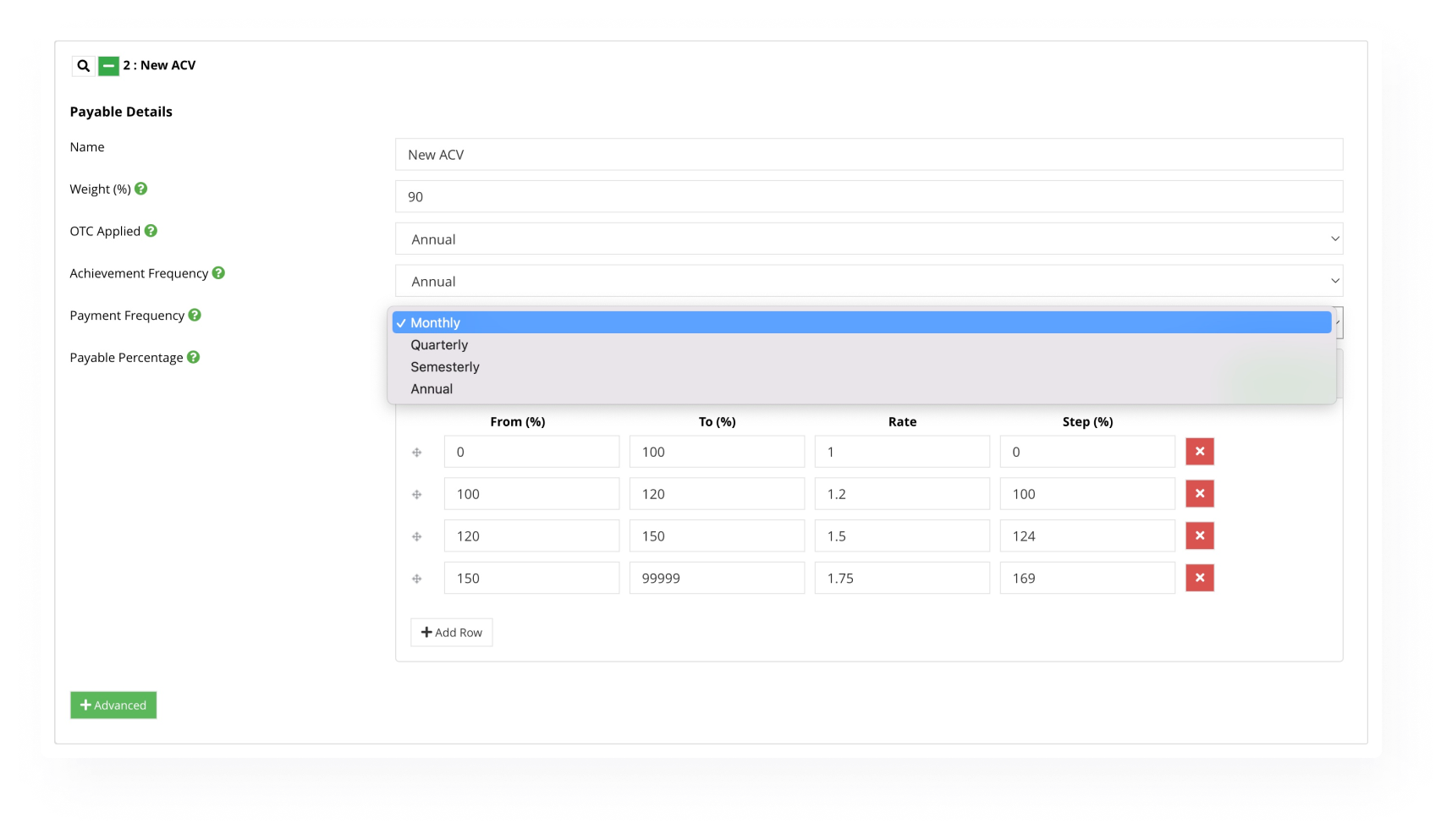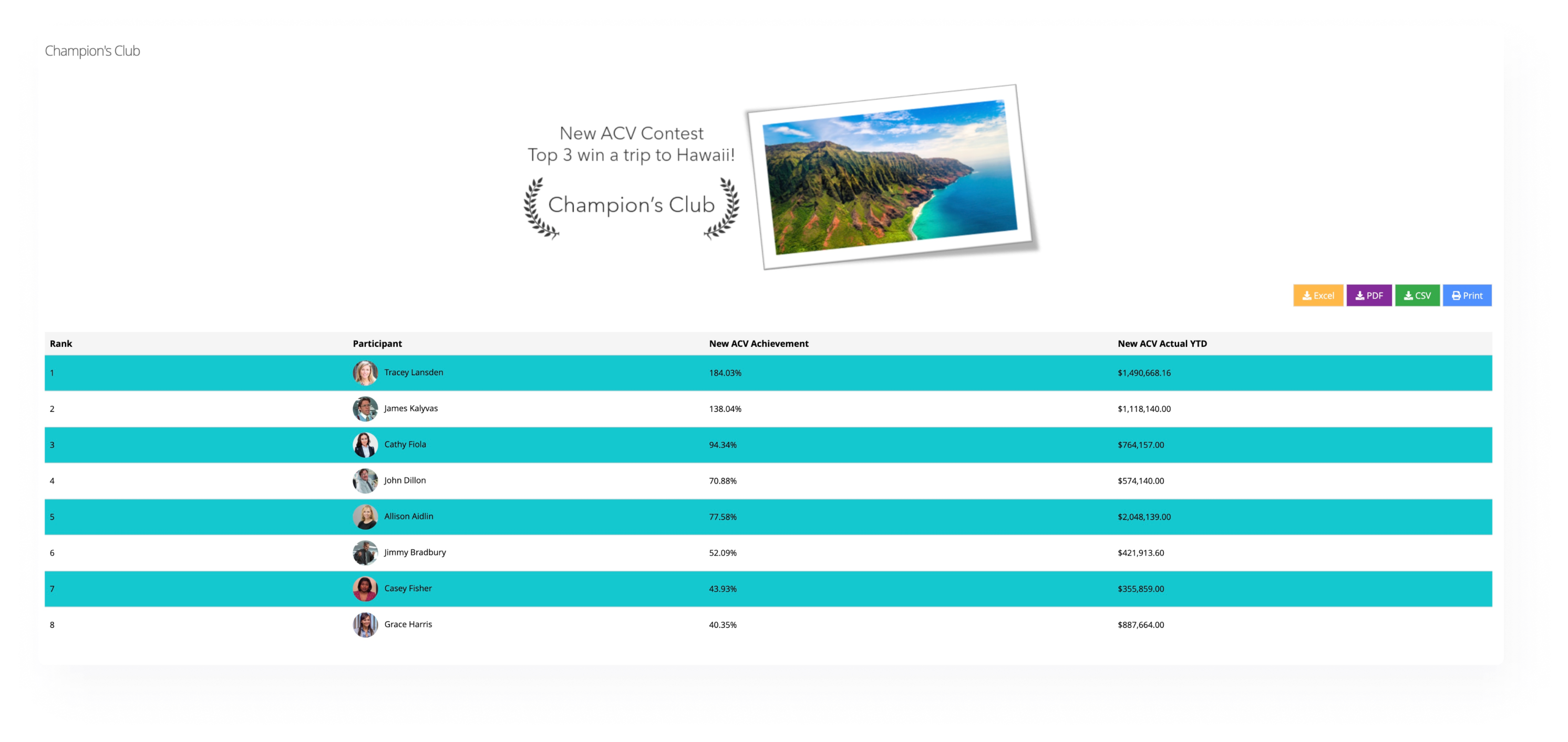Sure, everyone knows the famous one-liners from William Shakespeare, “To be or not to be, that is the question,” “This above all; to thine own self be true.” “Parting is such sweet sorrow.” But when drawing comparisons to the results of effective planning, we had to delve deep into the Shakespeare playbook (blame it on the English degree 😆).
So, here we go for the simplicity of arguably the most talented wordsmith of all time. In the play King John, Shakespeare wrote, "Strong reasons make strong actions.” In this context, meaning a well informed plan driven by purpose drives powerful results. And while there is a lot of work that goes into planning, without a plan, you’re sunk. Now that we think about it, maybe “To be or not to be, that is the question,” does work. So how about your sales compensation plan, will it be or not? We’ve got your back!
The average turnover rate for sales reps is 35%—that’s 23% higher than the average for all other job roles. This staggering number shows how difficult it can be to attract and keep the best sales talent.
Employee job satisfaction is driven by many factors, including the company, the culture, and the benefits you provide. Working to keep each of these areas appealing will ensure your team members are happy, engaged, and motivated. One of the best ways to improve your retention rate is by offering an attractive sales compensation plan with the right on-target earnings (OTE), quotas, and transparency.
When your sales reps feel taken care of, they not only stick around, but they perform better, generating more revenue for your company.
In this article, we’ll explain what a sales compensation plan does, and we’ll show you how to create a compensation plan that motivates your sales reps and prevents you from losing the best talent. Let’s start by reviewing the purpose of these plans.
What does a sales compensation plan do?
Sales compensation is the total amount of money you pay your sales reps per year—the combination of base salary, commissions, and other incentives like bonuses. A competitive compensation plan should encourage high performance, ensuring your sales reps meet or exceed their sales quotas.
Keep in mind that there’s no one-size-fits-all approach to developing effective sales compensation plans. Every company has different goals, needs, and requirements. But all sales compensation plans should meet a few basic requirements.
It should align incentives with your company’s goals
Before designing a compensation plan, consider exactly what it is you want your sales reps to achieve. What big-picture company goals are you working toward with your sales team? What role do they play in achieving those goals? Your sales compensation plan should be specific to what you want your company to accomplish.
It should offer competitive compensation
To attract and retain the best talent, your sales compensation plan needs to be competitive. Plan to meet or exceed what similar businesses in your industry offer their sales reps, and be sure to differentiate compensation between top-performing and underperforming reps.
It should motivate your sales reps
Beyond simply keeping your sales reps around, you want to motivate them and drive them to improve performance. Your sales compensation plan should reward your sales reps for being more productive, rather than encourage them to rest on their laurels.
It should communicate clearly
Your sales compensation plan needs to be simple and clear enough for your sales reps to understand your company’s goals, their sales quotas, and the benefits they’ll get if they meet their targets.
How to develop a sales compensation plan
With the requirements in mind, here are seven steps to designing a sales compensation plan that will reduce your turnover rate and motivate your sales reps to perform at or above their quotas.
Step 1: Identify your company objectives and values
Defining your company’s goals is the crucial first step to developing your sales compensation plan. While they will vary from one company to the next and should be specific to your business, these goals could include:
- Increasing sales for specific products
- Increasing your customer retention rate
- Increasing the lifetime value of your customers
- Lowering your company’s expenses
- Growing your company’s revenue
Be sure to include both short- and long-term goals for your team and company.
Identifying these goals will help you determine what products and services to focus on, identify your ideal customer profiles and industries, and establish profitability goals. You should also understand how much and what type of sales talent you’ll need to meet those goals.
Step 2: Define concrete actions and behaviors
Once you’ve determined your goals and objectives, you should align each company objective with a desired action and outcome. Identify which behaviors you want to encourage, reward, and see repeated, as well as behaviors that need to be eliminated.
For example, if you want to increase the sales of a specific product, you could implement additional incentives for every sale of that product. Or if you’re focused on increasing repeat business or increasing the lifetime value of every customer, you could offer tiered incentives for future products bought by the same customer.
By aligning your business goals with actions, you create a system that reinforces and rewards positive behaviors.
Step 3: Equip the plan with basics
Every sales compensation plan requires two components: base pay and variable or incentive pay. Together, these components make up the pay mix. You should calculate and forecast these numbers using data, and then let your team know what process you used to come up with them.
One of the best ways to do this is by determining the on-target earnings or OTE. This is the total amount of compensation you’ll pay your sales reps provided that they meet their sales quotas.
Determining the OTE
When determining the OTE, it’s important to know what competitive compensation looks like in your industry. If you can’t match or exceed market expectations, you’ll struggle to attract and retain the best talent.
Websites like Glassdoor provide the salary range at similar companies in your industry, and potential sales hires will also be checking these sites to determine whether your offer is competitive. Use this data as a starting point. From there, you can adjust the OTE up or down depending on your specific market, the products you sell, and the experience required for the role.
The key in determining the OTE is finding the right balance. If you overpay, your customer acquisition costs could be too high. But if you underpay, you’ll have low morale and poor performance among your sales staff, causing your bottom line to suffer and your sales rep retention rates to plummet.
Determining the pay mix
The pay mix is the ratio of base pay to variable pay in the total compensation. To illustrate, let’s look at a simple example.
Assume you offer your sales reps an OTE of $90,000 per year with a pay mix of 70:30. This means you’ll pay your sales reps an annual base salary of 70% of their OTE, plus a commission of 30% of their OTE. That equals a base salary of $63,000 and a commission of $27,000 per year if they hit their targets.
It’s crucial to get the pay mix right because it determines the amount of risk involved for sales reps in earning their OTE.
If the ratio leans too far toward variable pay, then the risk will be too high. Sales reps will have too much to lose if they fail to meet their targets. A low base salary will also impact your sales reps’ morale, causing their performance to suffer.
However, if the ratio leans too far toward a high base salary, then your sales reps’ motivation could decrease because they don’t have enough incentive to meet their quotas.
To determine the pay mix, look at the average pay mix ratios used by similar companies in your industry. From there, you can make adjustments based on your products, the complexity of the sales process, sales cycles, and your sales reps’ experience.
Determining the quotas
Because your sales reps’ quotas go into the calculation for their pay mix and the OTE, it’s important to consider what their quotas should be in tandem with this process.
You can develop quotas with top-down or bottom-up target setting, and you can set them either individually per sales rep or collectively for the whole team. The right quotas can improve performance, but the wrong quotas could actually make your sales reps less productive.
If your quotas are too high, your sales reps will perceive them as unreachable and discount them accordingly. If they don’t believe it’s worth the effort to reach them, they’ll just calculate their earnings based on not hitting their targets. Their overall motivation, morale, and performance will suffer. However, if your quotes are too low, most of your sales reps will reach them with ease, and you may end up overpaying for performance.
You need to set quotas that are just challenging enough to be achievable by most sales reps and worth the effort. This will motivate reps who fail to achieve their quotas while rewarding those who meet them.
How do you find the right quota? As with the OTE, industry averages provide a good starting point. Look to similar companies in your industry, and use their average quotas as a baseline. Then make adjustments to your specific quota based on your sales reps’ historical performance.
Step 4: Decide when to provide compensation
Generally speaking, you’ll want to compensate your sales reps as quickly as possible. The sooner you reward them, the more motivated they’ll be to close a sale. But while quicker is better, this approach won’t always be possible, as it depends on your industry, your products, your company size, and your team.

For example, if you sell products with long sales cycles and complex sales journeys, that’s inherently going to limit your ability to issue quick payouts. The frequency of your payouts will also depend on the duration of the assessment period for your sales reps’ performance.
Standard commission payouts vary from monthly to quarterly or even bi-yearly, but you’ll need to find the approach that works best for your company.
Step 5: Pick your payroll software
Using the right payroll software is crucial for compensating your sales reps, especially if your sales team consists of more than about 10 people. You have many options to choose from, but you need to be sure that your payroll software can:
- Automate tax calculations
- Ensure paycheck accuracy
- Eliminate errors and miscalculations
- Integrate with other business systems
- Help sales reps’ understand how they’re doing
Payroll software should make your life easier without requiring you to spend hours learning how it works. The goal is to stay away from manual entry into sales spreadsheets and other time-consuming processes that lead to errors or data loss.
Step 6: Communicate expectations clearly
The best sales compensation plan won’t do much good if your sales reps don’t understand it or can’t use it themselves. They need to know exactly what is expected of them, how they’ll be compensated, and how they can maximize their earnings.
Ideally, they should also have a real-time window into their current performance so they can see how they’re doing and how they can improve. Including leader-board rankings can also let them see how they compare to other sales reps, encouraging friendly competition. This also helps staff evaluate how achievable your goals are when they see where top performers are at.

You can also consider implementing sales accelerators and thresholds. Accelerators are higher commission rates paid to sales reps once they exceed their quota. And thresholds are minimum performance levels below which your sales reps will not earn any commission.
These strategies allow you to maximize the performance of your high-performing sales reps while motivating your underperformers to perform better. Your sales reps must know what is expected of them and what they need to do to achieve their quotas.
Step 7: Remain flexible
Before you implement your sales compensation plan, remember one important thing: stay flexible.
For sales compensation plans to be effective, they must be tailored for different sales roles, experience, and industries. Keep in mind that the sales compensation strategy is designed to increase desired outcomes by rewarding certain types of behaviors—not to deter your sales team or scare people off.
That means you’ll need to consider how each team member’s perspective and experience impact their performance, and adjust your plan accordingly. It’s also important to make sure your team knows that you’re dedicated to finding a plan for everyone.
Whatever sales compensation plan you come up with, be willing to listen to feedback, reassess, and make adjustments as needed.
Benefits of having a sales compensation plan
With an understanding in place of how to develop a sales compensation plan, it’s worth considering what your company can gain by implementing it. What are the benefits of having an effective sales compensation plan?
More structure in your team
A well-developed sales compensation plan creates more structure in your team. It allows your sales reps to see how you differentiate between different levels of performance and how you provide compensation accordingly. They’ll be able to see what opportunities are available for advancement in the company, along with what their earning potential could be. And this structure brings with it a sense of security, helping to improve your sales rep retention rates.
Increased motivation
Showing your sales reps exactly what they can earn motivates them to sell more products because they can see how every sale contributes toward their compensation. Increased motivation leads to improved performance, allowing your company to generate more revenue. Your compensation plan can also include incentives around furthering your sales reps’ education. This motivates them to complete additional training which makes them more effective at selling.
More engagement
Sales as an industry has historically tended to have significant employee turnover. Part of the problem has to do with a lack of engagement. When sales reps are disengaged, it leads to lower morale and lower sales numbers. By introducing a well-developed sales compensation plan, you’ll allow your reps to see how they perform and how much they can earn, increasing their engagement.
Increased sales
Sales compensation plans have been proven to increase sales and overall company revenue. This works by increasing motivation and engagement. When sales reps know they can earn more by meeting their targets, they tend to sell more.
Better planning and budgeting
A well-developed sales compensation plan helps you effectively manage your company’s finances. It shows you exactly how much you’ll pay every sales rep, as well as how much your company earns from your sales teams’ performance. This allows you to better plan and budget, helping to keep your company’s finances under control.
Execute your sales compensation plan with Performio
An effective sales compensation plan allows you to motivate your sales reps, increase their performance, and make more sales. But developing an effective sales compensation plan can be challenging.
That’s why Performio developed easy-to-use sales commission software. Your sales reps will receive timely reports and leader-board rankings, keeping them motivated and performing at their best.
Our software is so straightforward that your sales reps won’t need any additional training to use it. And you’ll never again have to worry about processing late or incorrect compensation payments.
Performio has saved more than 500,000 administrative hours and calculated more than a billion dollars in commissions for our clients.
Schedule a demo today, and see how we can help your business.
